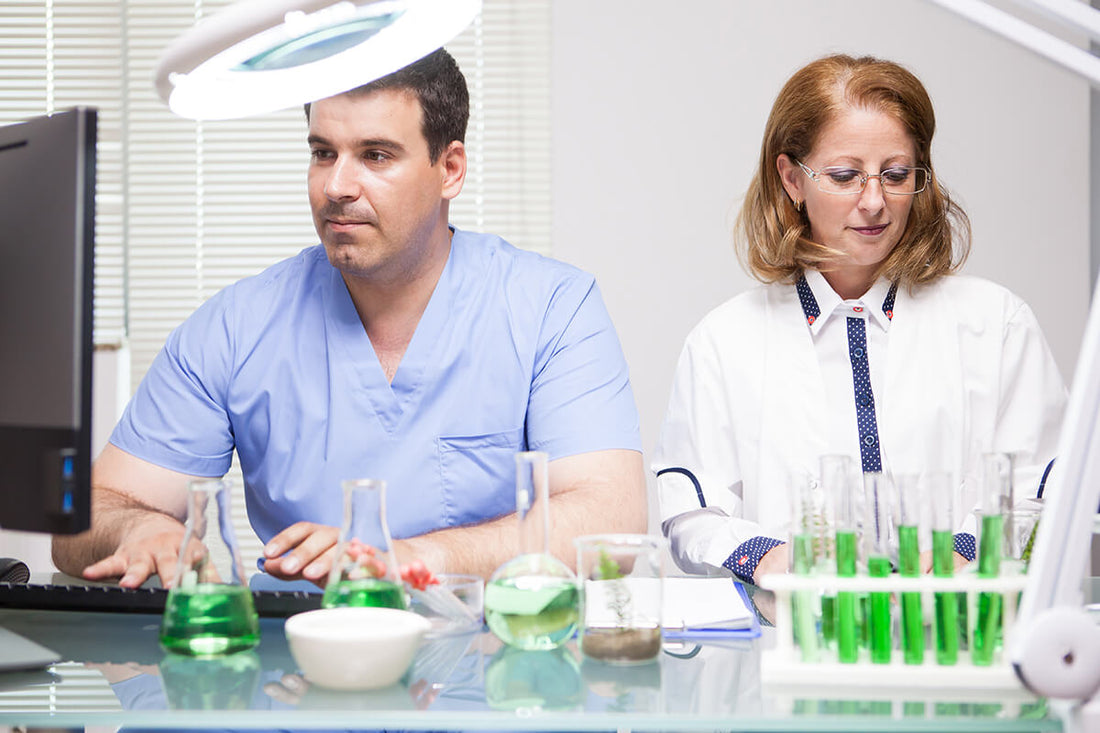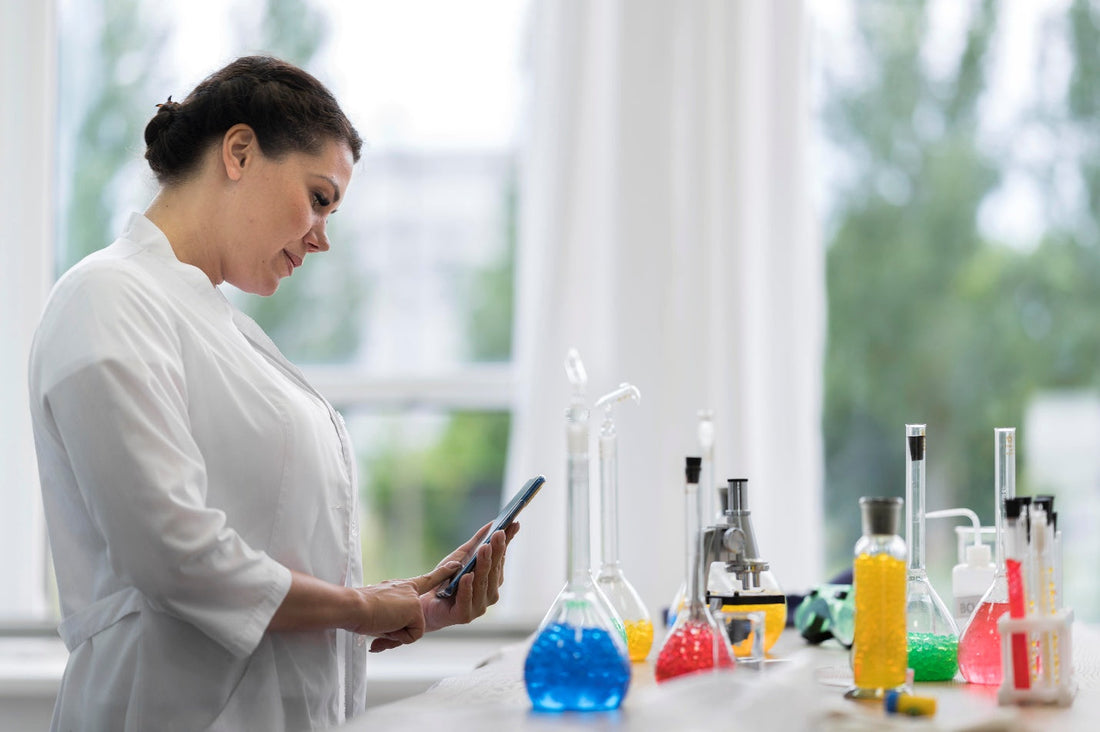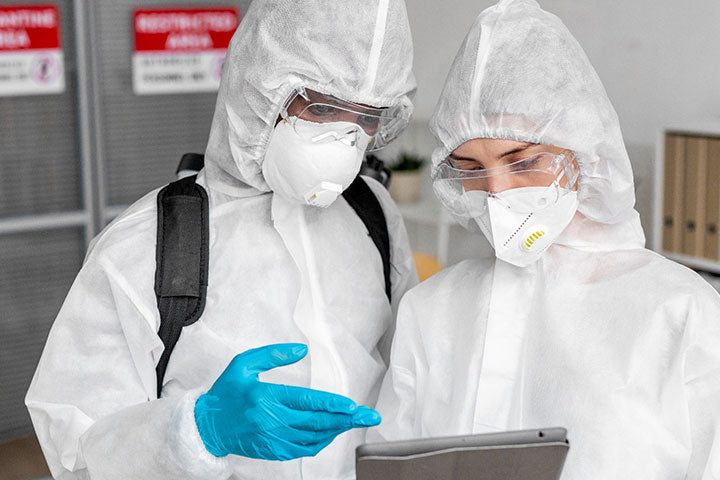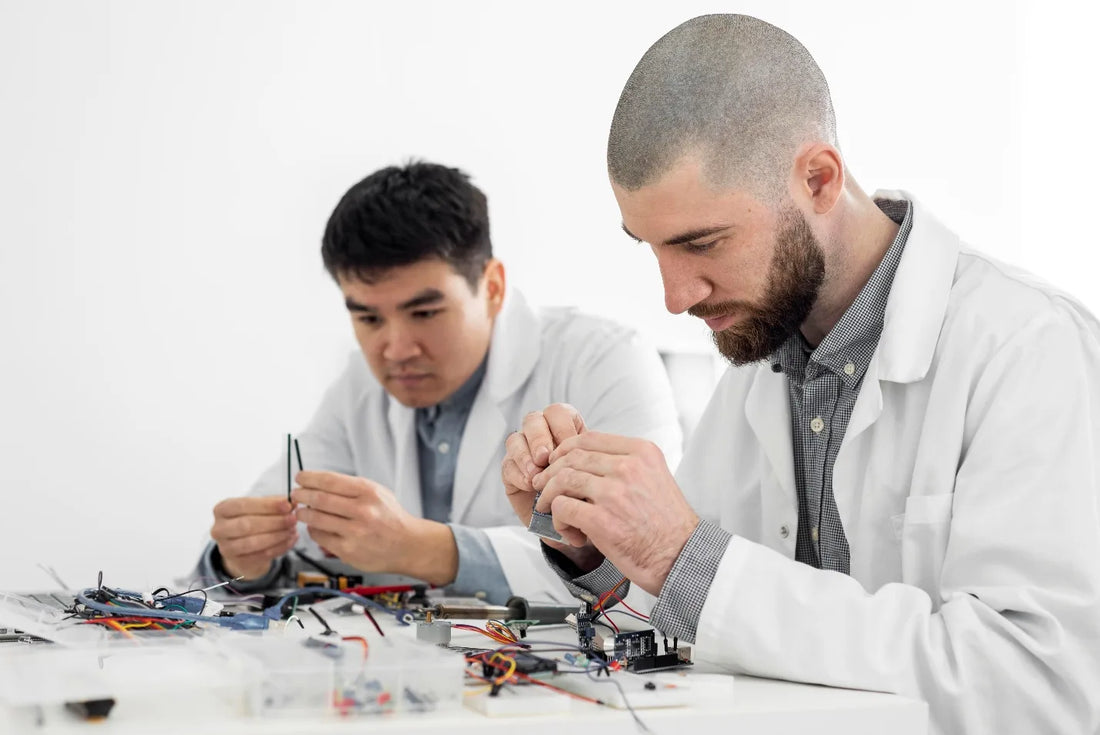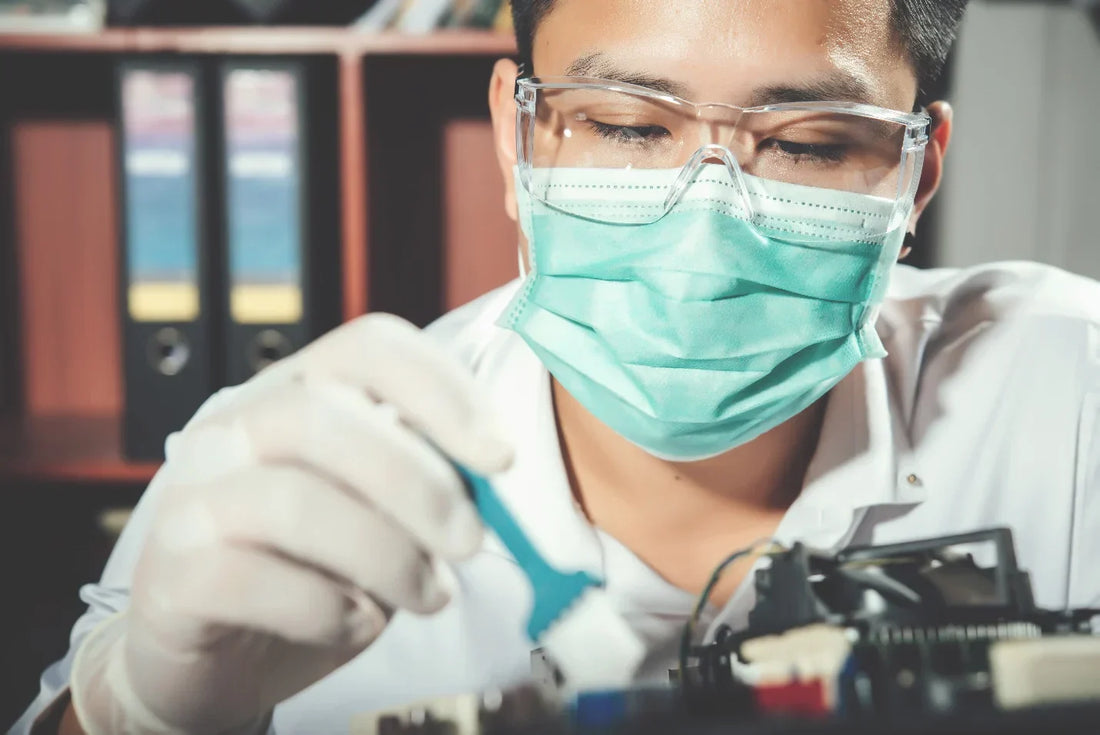When to Repair vs. When to Replace Lab Equipment: A Cost-Benefit Analysis

Summary
-
The decision to repair or replace lab equipment depends on balancing short-term costs with long-term efficiency and reliability.
-
Repair is the smarter choice when the issue is minor, the unit is still under warranty, or replacement parts are affordable and available.
-
Replacement becomes more practical when repair costs exceed half the price of new equipment, the model is discontinued, or it no longer meets safety and compliance standards.
-
Preventive maintenance helps delay costly replacements by catching issues early and keeping equipment calibrated and efficient.
-
In the long run, choosing between repair and replacement should focus on minimizing downtime, ensuring accuracy, and protecting your lab’s productivity and compliance.
1. Introduction
Maintenance and calibration of laboratory equipment are essential for achieving reliable results and long-term efficiency. When critical instruments start showing signs of wear or malfunction, every lab manager faces the same question: Should I invest in a lab equipment repair service or replace the unit altogether?
The answer isn’t always straightforward. Repairing may seem cost-effective in the short term, but outdated or unreliable equipment can compromise test accuracy, safety compliance, and productivity. On the other hand, replacement comes with higher upfront costs, downtime for installation, and staff retraining.
In this article, we will break down the signs that your equipment needs repair, the key costs of repair versus replacement, situations that call for each option, and how you can reduce repair costs.
2. Signs Your Lab Equipment Needs Repair Service
Catching lab equipment malfunctions early can save your lab from costly repairs, downtime, and compliance issues. Knowing when to schedule lab repair is a crucial part of keeping your equipment safe and reliable. Here are some signs that your lab equipment needs repair:
-
Visible Damage or Noise
Look for cracks, dents, or broken parts. A seemingly minor issue can affect how your equipment works. Additionally, pay attention to strange or loud noises from your equipment. It indicates severe internal problems such as loose parts and component malfunctions.
-
Inconsistent Performance
If your equipment gives irregular readings, inconsistent results, or results that are outside the normal range, it might need repair or recalibration. Inaccurate results affect research and scientific procedures.
-
Frequent Error Message
Error messages are your equipment’s way of informing you of performance inconsistencies or internal damage. Knowing what different error codes mean is crucial to resolving the issue and preventing a more costly repair. Depending on the message, you may need to hire a professional lab technician or follow the instructions in the user manual to resolve the problem.
3. Key Cost Factors in Lab Equipment Repair vs. Replacement
When your lab equipment starts failing, cost is usually the first consideration in deciding between repair and replacement. While a lab equipment repair service may seem like the faster and less costly solution, the long-term financial impact may prove more expensive than anticipated.
-
Age and Condition of the Equipment
As equipment ages, they are more prone to wear and tear, leading to frequent breakdowns and repairs. While regular maintenance is essential to ensuring your equipment functions optimally and provides accurate results, older equipment requires more frequent and costly maintenance to maintain its efficiency and functionality.
-
Potential Downtime
If fixing the equipment will take a significant amount of time or there’s no guarantee that the problem is permanently solved, then it might be worth getting new equipment that won’t break as often. Consider how long your downtime might be for both repair and replacement, and make your decision accordingly. A more extended downtime might be acceptable if it restores reliable and efficient operation.
-
Staff Training
The initial cost of acquiring new equipment is not the entire cost involved in a new installation. You also have to factor in the cost of training your staff in handling and maintaining it.
-
Warranty and Service Agreements
If your equipment is still under the manufacturer’s warranty or service agreement, repairs can be done at reduced costs or even free of charge. Once warranties expire, it might be better to get a replacement, as a repair may be too costly.
4. Situations Where Lab Equipment Repair Is the Better Choice
In many cases, a professional laboratory equipment repair can restore functionality, extend the lifespan, and ensure compliance of your equipment. Here are some situations where a repair is the smarter decision:
-
The equipment is relatively new or still under warranty
If the equipment is still under warranty, the manufacturers or service providers can fix covered issues at little or no cost. This restores your equipment to its original condition with no financial commitment from you.
-
The problem is minor.
Many lab equipment issues, such as faulty sensors, loose wiring, and calibration errors, can be easily fixed and don’t cost much to resolve. A qualified technician can identify and resolve the issue during a routine lab equipment repair service, saving you from a potentially costly breakdown.
-
Replacement parts are available and affordable.
When replacement parts are readily available and affordable, repair becomes a solid option. This is particularly the case for sensitive equipment such as centrifuges, incubators, and biosafety cabinets.

5. Instances Where Lab Equipment Replacement Is More Practical
In some cases, continued lab equipment maintenance may only provide temporary relief while costs and risks keep rising. Recognizing when to invest in new equipment is essential for maintaining safety, compliance, and efficiency in your laboratory operations.
-
The equipment is discontinued.
When the manufacturer has discontinued a model or stopped supplying parts for it, replacement becomes inevitable.
-
The repair cost is more than the replacement cost.
A good industry rule of thumb is that if a single repair costs more than half the price of a new unit, then a replacement is the better choice.
-
Safety and compliance concerns
Equipment that no longer meets NSF, ISO, or manufacturer calibration standards poses a compliance and safety risk. In some cases, even professional lab equipment repair service may not restore safety functions, making a replacement the only viable solution.
-
Reduced performance
As equipment ages, its performance also declines. If your equipment requires frequent repairs or calibrations, it is becoming inefficient and needs to be replaced.
6. The Role of Preventive Maintenance in Reducing Repair Costs
Preventive maintenance is an effective strategy for reducing long-term repair expenses and avoiding unexpected equipment failures. Here’s how:
-
Early detection of performance issues
Routine preventive maintenance helps technicians identify early signs of equipment malfunction (such as electrical wear, rust, and noisy operation) and resolve them before they evolve into major problems.
-
Improved calibration
Over time, equipment gets out of calibration, leading to inaccurate results and compliance risks. Regular calibration ensures compliance with relevant standards, including ISO and NSF.
-
Reduced downtime
Regular preventive maintenance helps reduce costs associated with equipment downtime, as emergency equipment repair service is more expensive than scheduled maintenance services.
7. Long-Term Cost-Benefit Analysis: Repair Service vs. Replacement
When deciding between repairing and replacing equipment, the following considerations ensure that you have a full view of long-term costs and impact:
-
Upfront vs. long-term costs
Repairing your equipment requires a small financial commitment; however, if your equipment needs frequent servicing, these costs can quickly add up. While a replacement may have a higher initial cost, it could lead to lower maintenance and energy bills in the long run.
-
Equipment lifespan and depreciation
Well-maintained equipment can perform reliably for years, even beyond its lifespan. Investing in routine laboratory equipment repair services can significantly slow depreciation, reducing the need for replacements or costly repairs anytime soon.
-
Energy efficiency
Newer lab equipment is designed to consume less energy, produce less noise, and operate more efficiently. Over time, these efficiencies can offset the initial cost of purchase, installation, and staff retraining.
-
Downtime and productivity
Each hour that your equipment remains down carries a measurable cost, especially for research facilities with strict deadlines. Repairs can restore functionality faster than a replacement, but if failures keep occurring, the lost productivity outweighs the savings from repair.
8. Choosing a Reliable Lab Equipment Repair Service Provider
Selecting the right lab equipment replacement or repair service plays a crucial role in equipment performance, safety, and compliance. Here are some tips for choosing the right provider:
-
Verify certifications and industry standards: Choose a service provider that adheres to recognized standards such as NSF and ISO certifications.
-
Look for experience with your equipment model, as laboratory equipment repair requires specialized service. For example, repairing a biosafety cabinet requires expertise in airflow certification, while repairs of centrifuges and incubators require precision and balancing.
-
Ask about availability: Downtime can disrupt research and timelines. Ensure that your service provider offers flexible scheduling and provides emergency response services to reduce downtimes.
-
Evaluate maintenance programs: Partner with laboratory equipment repair services that provide customizable maintenance plans. These plans help ensure equipment efficiency, operational reliability, and equipment lifespan extension.
-
Customer reviews and testimonials: Check online customer reviews and testimonials for signs of bad business practices, poor customer service, or dishonest approaches.
9. Conclusion
Deciding whether to repair or replace laboratory equipment requires evaluating cost, performance standards, safety, and long-term value.
Partnering with a lab equipment repair service is a solid option if the equipment is still under warranty, the problem is minor, and replacement parts are still available. While a replacement is best when the damage is recurring, the model is discontinued, and the repair cost is more than half the cost of replacing the instrument.
If you need a lab equipment repair near me, contact R&D Laboratory Equipment.
10. FAQs
-
How do I know if I should repair or replace lab equipment?
You should consider repair if the issue is minor, the unit is relatively new, or the repair cost is less than 50% of the replacement value. However, if the equipment frequently fails, is obsolete, or can’t pass calibration tests, replacement is the more practical option.
-
What are the benefits of choosing a professional lab equipment repair service?
A professional lab equipment repair service ensures accurate diagnostics, proper calibration, and compliance with NSF, ISO, or manufacturer standards.
-
How much does lab equipment repair near me typically cost?
Minor repairs or recalibrations may cost a few hundred dollars, while major component replacements can reach several thousand.
-
When is lab equipment replacement the most cost-effective solution?
Replacement becomes more cost-effective when the instrument’s repair costs exceed half of the replacement price, when parts are no longer available, or when the equipment no longer meets regulatory or performance standards.
-
How often should lab equipment undergo repair and maintenance checks?
Most laboratory instruments should receive preventive maintenance or calibration at least once a year, depending on usage and manufacturer recommendations.
-
Can preventive maintenance really reduce the need for major repairs?
Yes. Preventive maintenance helps identify minor issues such as calibration drift, worn seals, or airflow inconsistencies before they lead to costly failures.
-
Does repairing lab equipment affect its calibration or certification?
Not if handled by qualified professionals. A reputable lab equipment repair service recalibrates and tests your instruments after any repair to ensure they continue to meet NSF, ISO, and manufacturer performance standards.
-
What should I look for when choosing a lab equipment repair service provider?
Choose a provider with industry certifications, experience servicing your specific equipment type, transparent pricing, and detailed service reports. Also, look for technicians who offer preventive maintenance programs and fast response times to minimize downtime.
-
How long does a typical lab equipment repair take?
Minor repairs and recalibrations can often be completed within a day, while more complex repairs may take several days.
-
Is it possible to upgrade existing lab equipment instead of replacing it?
Specific instruments can be upgraded with new software, sensors, or control panels to improve performance and extend usability. A knowledgeable lab equipment repair service provider can assess whether upgrades are feasible and cost-effective compared to a full replacement.


